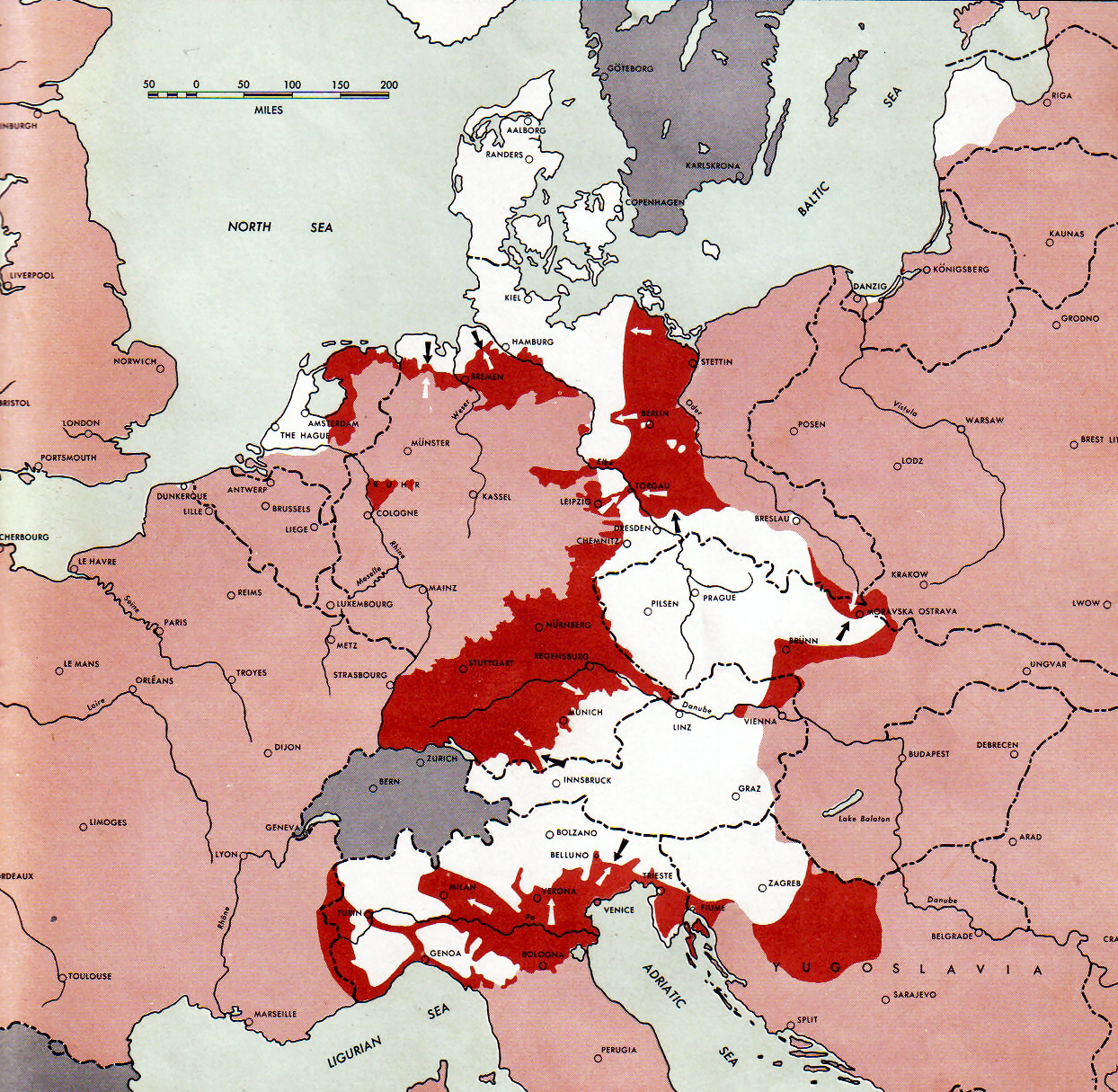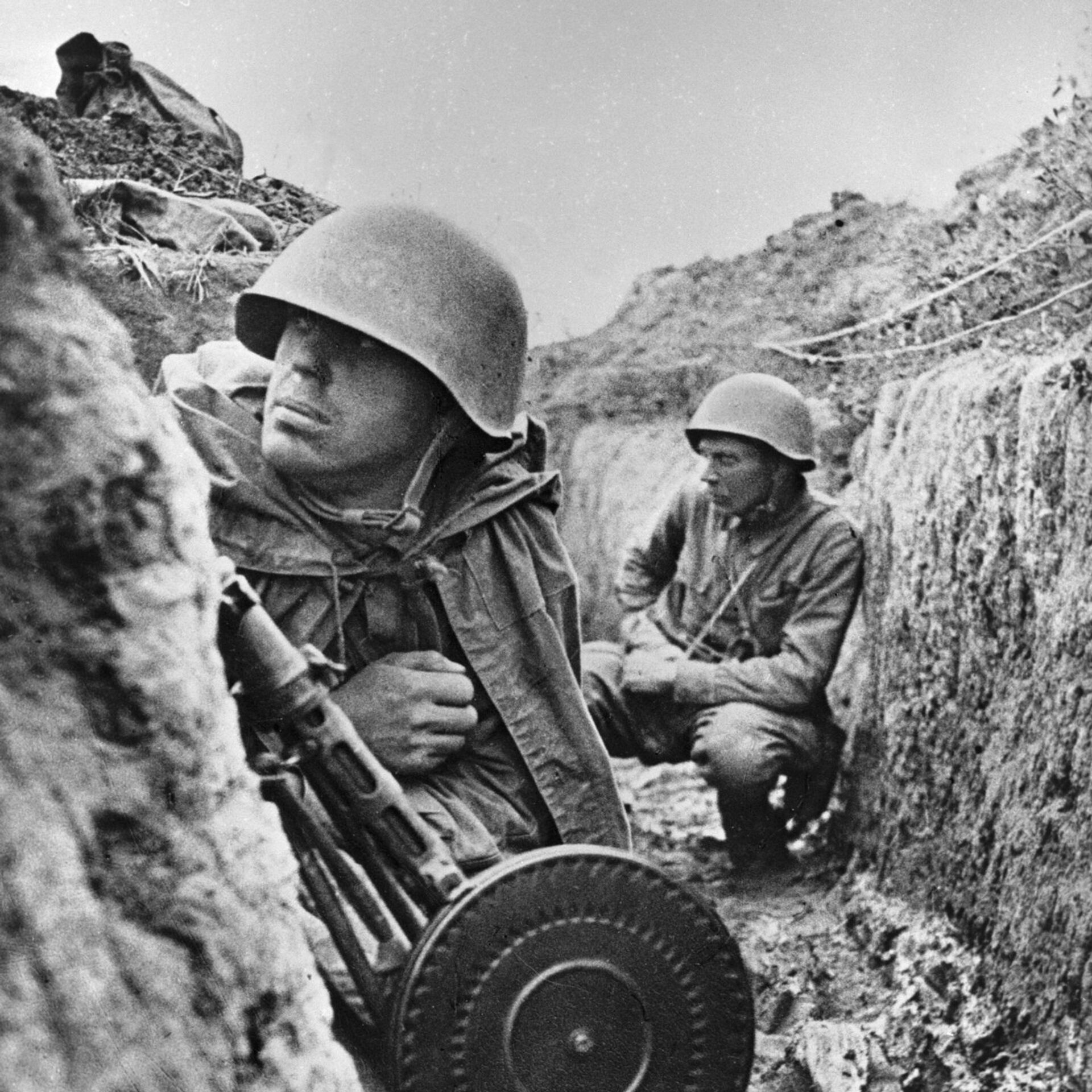|
8th Estonian Rifle Corps
The 8th Estonian Rifle Corps (2nd formation) (russian: 8-й Эстонский стрелковый корпус, et, 8. Eesti Laskurkorpus) was a formation in the Red Army, created on 6 November 1942, during World War II. An 8th Rifle Corps (but not made up of Estonian personnel) had been previously formed, taking part in the Soviet invasion of Poland as part of the 5th Army, and, on the outbreak of war on 22 June 1941, this first formation was part of the 26th Army in the Kiev Special Military District, consisting of the 99th, the 173rd, and the 72nd Mountain Rifle Divisions. The first formation of the 8th Rifle Corps was destroyed in the first three months of the German invasion and is not present on the Soviet order of battle after August 1941. The 8th Estonian Rifle Corps was formed of mobilized ethnic Estonians, who were at first brought in Russia (where many of them died because of poor conditions); the battalions created in Estonia and incorporated former personnel ... [...More Info...] [...Related Items...] OR: [Wikipedia] [Google] [Baidu] |
Soviet Union
The Soviet Union,. officially the Union of Soviet Socialist Republics. (USSR),. was a transcontinental country that spanned much of Eurasia from 1922 to 1991. A flagship communist state, it was nominally a federal union of fifteen national republics; in practice, both its government and its economy were highly centralized until its final years. It was a one-party state governed by the Communist Party of the Soviet Union, with the city of Moscow serving as its capital as well as that of its largest and most populous republic: the Russian SFSR. Other major cities included Leningrad (Russian SFSR), Kiev (Ukrainian SSR), Minsk ( Byelorussian SSR), Tashkent (Uzbek SSR), Alma-Ata (Kazakh SSR), and Novosibirsk (Russian SFSR). It was the largest country in the world, covering over and spanning eleven time zones. The country's roots lay in the October Revolution of 1917, when the Bolsheviks, under the leadership of Vladimir Lenin, overthrew the Russian Provisional Government ... [...More Info...] [...Related Items...] OR: [Wikipedia] [Google] [Baidu] |
Kalinin Front
The Kalinin Front was a major formation of the Red Army active in the Eastern Front of World War II, named for the city of Kalinin. It was formally established by Stavka directive on 17 October 1941 and allocated three armies: 22nd, 29th Army and 30th. In May 1942, the Air Forces of the Kalinin Front were reorganised as the 3rd Air Army, comprising three fighter, two ground attack, and one bomber division. In November 1942 the Kalinin Front, along with the Western Front, launched Operation Mars against the German defenses in the Rzhev/Vyaz'ma salient. The 3rd Shock Army, now allocated to Kalinin Front, started the operation on 24 November by attacking Third Panzer Army at Velikiye Luki, and the next day the Kalinin and Western Fronts assaulted the entire perimeter of the Rzhev salient. The offensive involved the 41st, 22nd, 39th, 31st, 20th, and 29th Armies from both Fronts. The Front was then involved in the Battle of Velikiye Luki in January–March 1943. The 3rd A ... [...More Info...] [...Related Items...] OR: [Wikipedia] [Google] [Baidu] |
SU-76
The SU-76 ('' Samokhodnaya Ustanovka 76'') was a Soviet light self-propelled gun used during and after World War II. The SU-76 was based on a lengthened version of the T-70 light tank chassis and armed with the 76 mm divisional gun M1942 (ZiS-3). Its quite simple construction and multipurpose combat role made it the second most produced Soviet armoured fighting vehicle of World War II, after the T-34 medium tank. History Design of the SU-76 began in November 1942, when the State Defense Committee ordered the construction of infantry support self-propelled guns armed with the ZiS-3 76.2 mm anti-tank gun and the M-30 122 mm howitzer. The T-70 chassis was chosen for mounting the ZiS-3 gun, and was lengthened, adding one road wheel per side, to facilitate better gun mounting. The vehicle was not completely enclosed by armour, the rear roof and upper rear side exposed. The power-plant setup installed in the first mass-produced SU-76s was unreliable. Two GAZ-202 automobile ... [...More Info...] [...Related Items...] OR: [Wikipedia] [Google] [Baidu] |
Battle Of Porkuni
Battle of Porkuni ( et, Porkuni lahing) was the largest engagement between Estonians serving in the Red Army and Estonian pro-independence and Waffen-SS units. It took place on 21 September 1944 between Lake Porkuni and the Sauvälja village about seven kilometres northeast of the town of Tamsalu location of the lake during the 's Tallinn Offensive Operation (17 September 1944 – 26 September 1944). The 249th Rifle Regiment of the 8th Estonian Rifle Corps< ...
[...More Info...] [...Related Items...] OR: [Wikipedia] [Google] [Baidu] |
Waffen SS
The (, "Armed SS") was the combat branch of the Nazi Party's ''Schutzstaffel'' (SS) organisation. Its formations included men from Nazi Germany, along with volunteers and conscripts from both occupied and unoccupied lands. The grew from three regiments to over 38 divisions during World War II, and served alongside the German Army (''Heer''), ''Ordnungspolizei'' (uniformed police) and other security units. Originally, it was under the control of the (SS operational command office) beneath Heinrich Himmler, the head of the SS. With the start of World War II, tactical control was exercised by the (OKW, "High Command of the Armed Forces"), with some units being subordinated to (Command Staff Reichsführer-SS) directly under Himmler's control. Initially, in keeping with the racial policy of Nazi Germany, membership was open only to people of Germanic origin (so-called " Aryan ancestry"). The rules were partially relaxed in 1940, and after the Operation Barbarossa invasion ... [...More Info...] [...Related Items...] OR: [Wikipedia] [Google] [Baidu] |
Battle Of Courland
The Courland Pocket (Blockade of the Courland army group), (german: Kurland-Kessel)/german: Kurland-Brückenkopf (Courland Bridgehead), lv, Kurzemes katls (Courland Cauldron) or ''Kurzemes cietoksnis'' (Courland Fortress)., group=lower-alpha was an area of the Courland Peninsula where Army Group North of Nazi Germany and the Reichskommissariat Ostland were cut off and surrounded by the Red Army for almost a year, lasting from July 1944 until 10 May 1945. The pocket was created during the Red Army's Baltic Offensive, when forces of the 1st Baltic Front reached the Baltic Sea near Memel (Klaipėda) during its lesser Memel Offensive Operation phases. This action isolated the German Army Group North from the rest of the German forces, having been pushed from the south by the Red Army, standing in a front between Tukums and Liepāja, Libau in Latvia, with the Baltic Sea in the West, the Irbe Strait in the North and the Gulf of Riga in the East behind the Germans. Renamed Army Gr ... [...More Info...] [...Related Items...] OR: [Wikipedia] [Google] [Baidu] |
Battle Of Velikiye Luki
The Battle of Velikiye Luki, also named Velikiye Luki offensive operation (russian: Великолукская наступательная операция), started with the attack by the forces of the Red Army's Kalinin Front against the Wehrmacht's 3rd Panzer Army during the Winter Campaign of 1942–1943 with the objective of liberating the Russian city of Velikiye Luki as a previous part of the northern pincer of the Rzhev-Sychevka Strategic Offensive Operation (Operation Mars). Sometimes known as "The Little Stalingrad of the North", the Soviet forces encircled the city on 27 November 1942, but were unable to make much progress against German units further west nor retake a key railway to Leningrad. The German garrison in the city was ordered to hold out for a relief force and put up a concerted defense. As was the case at Stalingrad, repeated German counterattacks were unable to reach the city, and the garrison surrendered on 16 January 1943. Background As part of Ope ... [...More Info...] [...Related Items...] OR: [Wikipedia] [Google] [Baidu] |
Wehrmacht
The ''Wehrmacht'' (, ) were the unified armed forces of Nazi Germany from 1935 to 1945. It consisted of the ''Heer'' (army), the ''Kriegsmarine'' (navy) and the ''Luftwaffe'' (air force). The designation "''Wehrmacht''" replaced the previously used term and was the manifestation of the Nazi regime's efforts to rearm Germany to a greater extent than the Treaty of Versailles permitted. After the Nazi rise to power in 1933, one of Adolf Hitler's most overt and audacious moves was to establish the ''Wehrmacht'', a modern offensively-capable armed force, fulfilling the Nazi régime's long-term goals of regaining lost territory as well as gaining new territory and dominating its neighbours. This required the reinstatement of conscription and massive investment and defense spending on the arms industry. The ''Wehrmacht'' formed the heart of Germany's politico-military power. In the early part of the Second World War, the ''Wehrmacht'' employed combined arms tactics (close-cover ... [...More Info...] [...Related Items...] OR: [Wikipedia] [Google] [Baidu] |
2nd Baltic Front
The 2nd Baltic Front (russian: 2-й Прибалтийский фронт) was a major formation of the Red Army during the Second World War. History The 2nd Baltic Front was formed on October 20, 1943 as a result of the renaming of the Baltic Front, itself a successor of the Bryansk Front 10 days earlier. From 1 to 21 November 1943, the left wing of the Front took part in the Polotsk–Vitebsk Offensive. In January-February, the front participated in the Leningrad–Novgorod Offensive of 1944. During the Staraya Russa-Novorzhev Offensive, the Front troops reached Ostrov, Pushkinskiye Gory and Idritsa. In July 1944, the Rezhitsa–Dvinsk Offensive was carried out and the Front advanced 200 km to the west. In August it conducted the Madona Offensive, during which it advanced another 60-70 km along the northern shore of the Daugava River and freed the city of Madona, a major junction of railways and highway roads. In September-October 1944, during the Baltic Offensive, ... [...More Info...] [...Related Items...] OR: [Wikipedia] [Google] [Baidu] |
Leningrad Front
The Leningrad Front (russian: Ленинградский фронт) was formed during the 1941 German approach on Leningrad (now Saint Petersburg) by dividing the Northern Front into the Leningrad Front and Karelian Front The Karelian Front russian: Карельский фронт) was a front (a formation of Army Group size) of the Soviet Union's Red Army during World War II, and operated in Karelia. Wartime The Karelian Front was created in August 1941 when ... on August 27, 1941. History The Leningrad Front was immediately given the task of containing the German drive towards Leningrad and defending the city from the approaching Army Group North. By September 1941, German forces to the south were effectively stopped on the outskirts of Leningrad, initiating the two-and-a-half-year-long siege of Leningrad. Although Finnish Army, Finnish forces to the north stopped at the old Finnish–Soviet border, the Leningrad front suffered severe losses on the Continuation War, F ... [...More Info...] [...Related Items...] OR: [Wikipedia] [Google] [Baidu] |
19th Guards Rifle Division
The 19th Guards Rifle Division was formed from the first formation of the 366th Rifle Division on March 17, 1942. At this time it was in the 52nd Army of Volkhov Front, taking part in the Lyuban Offensive Operation, which was planned to encircle and defeat the enemy forces laying siege to Leningrad. However, just at that time the German 18th Army was in the process of cutting off the Soviet Lyuban grouping in a pocket, and over the following months the division was nearly destroyed. Enough survivors emerged from the swamps in June and July to rebuild the unit, and it fought in the Second Sinyavino Offensive before it was shifted south into Kalinin Front to take part in the battle and siege of Velikiye Luki in December. In the summer of 1943 the 19th Guards fought in the battles for Smolensk, and won its first battle honor, " Rudnya". in September. During the offensive in the summer of 1944 it was awarded the Order of the Red Banner for its successes in the fighting around Vitebsk. ... [...More Info...] [...Related Items...] OR: [Wikipedia] [Google] [Baidu] |



